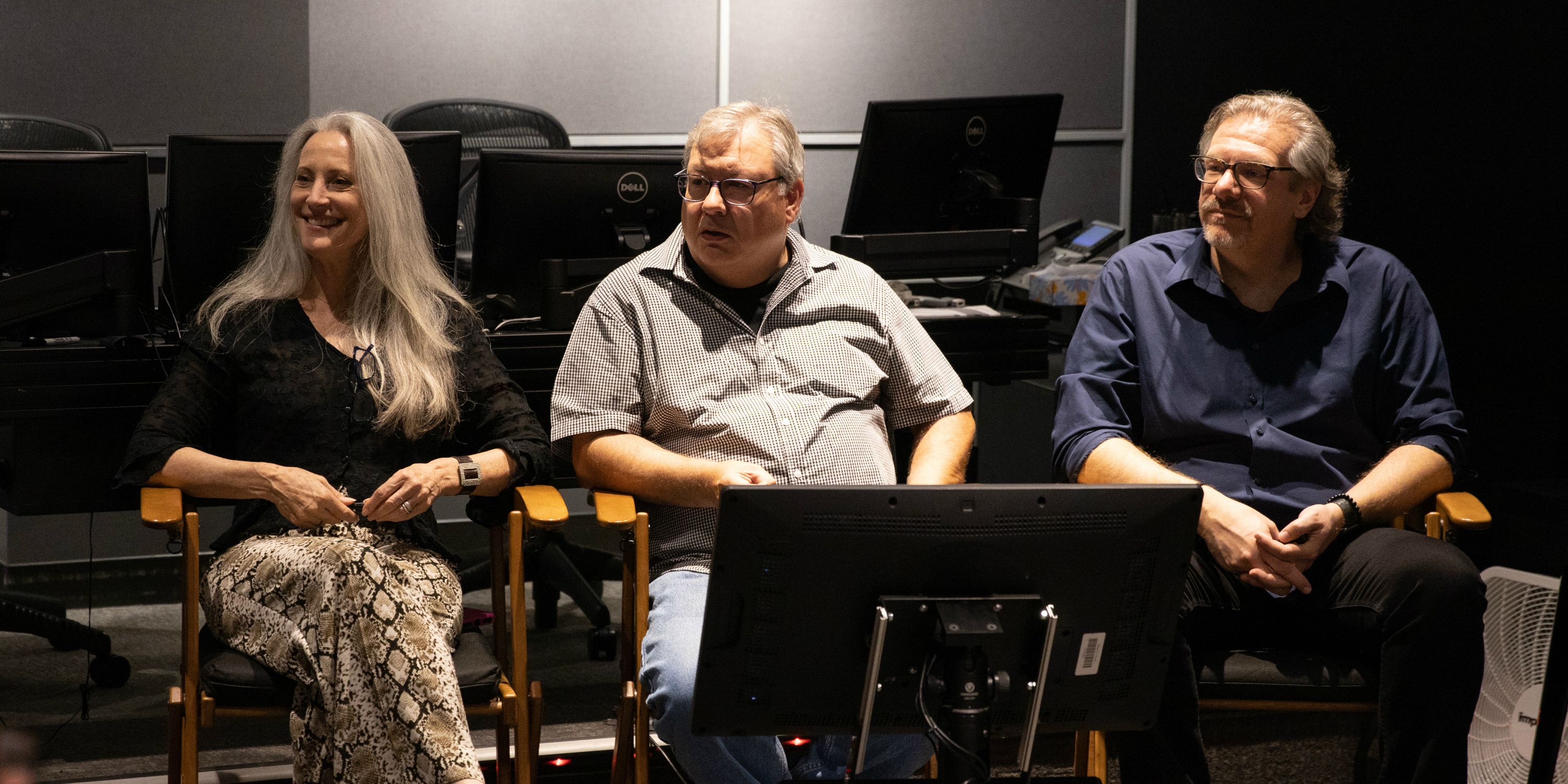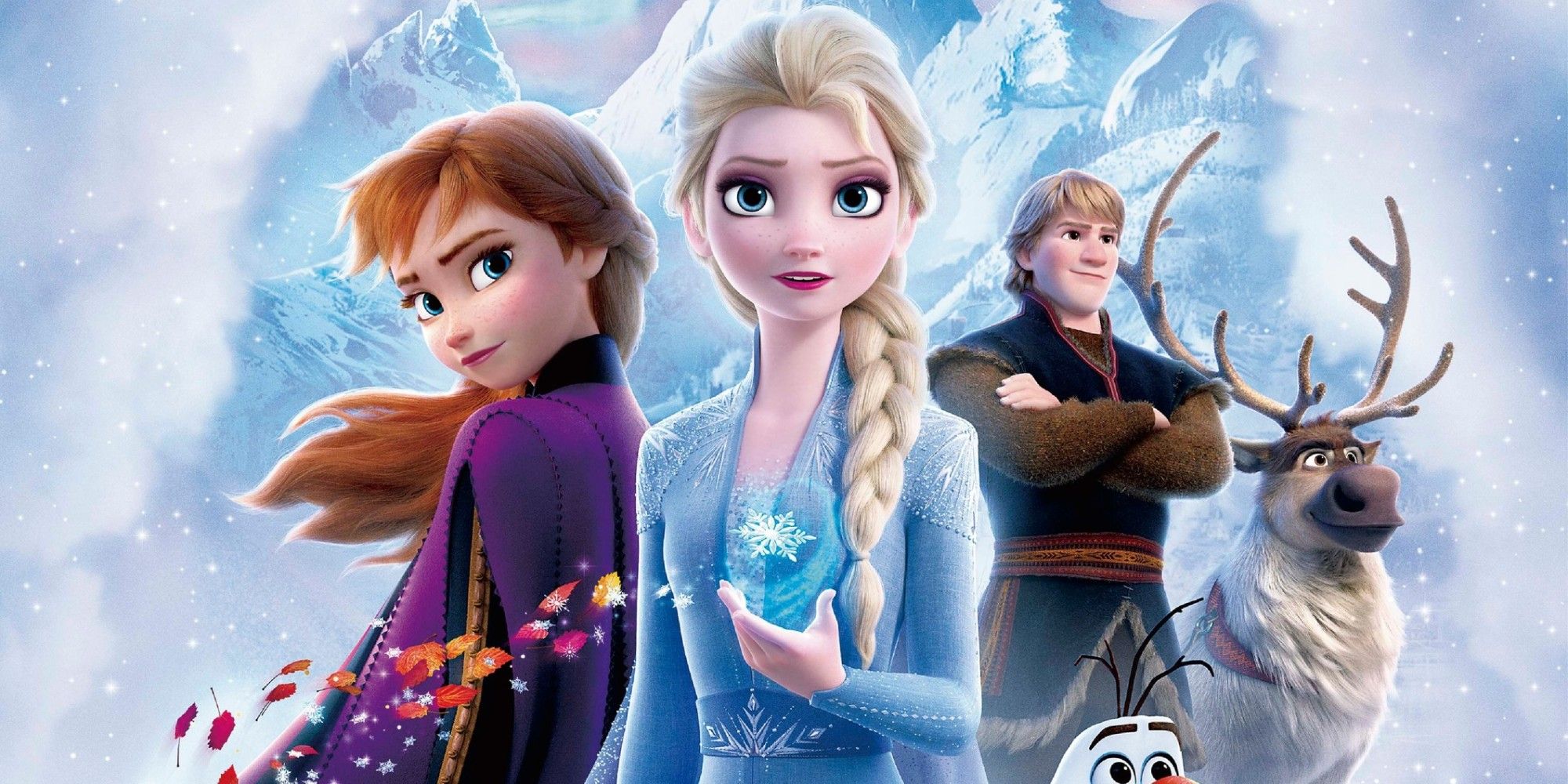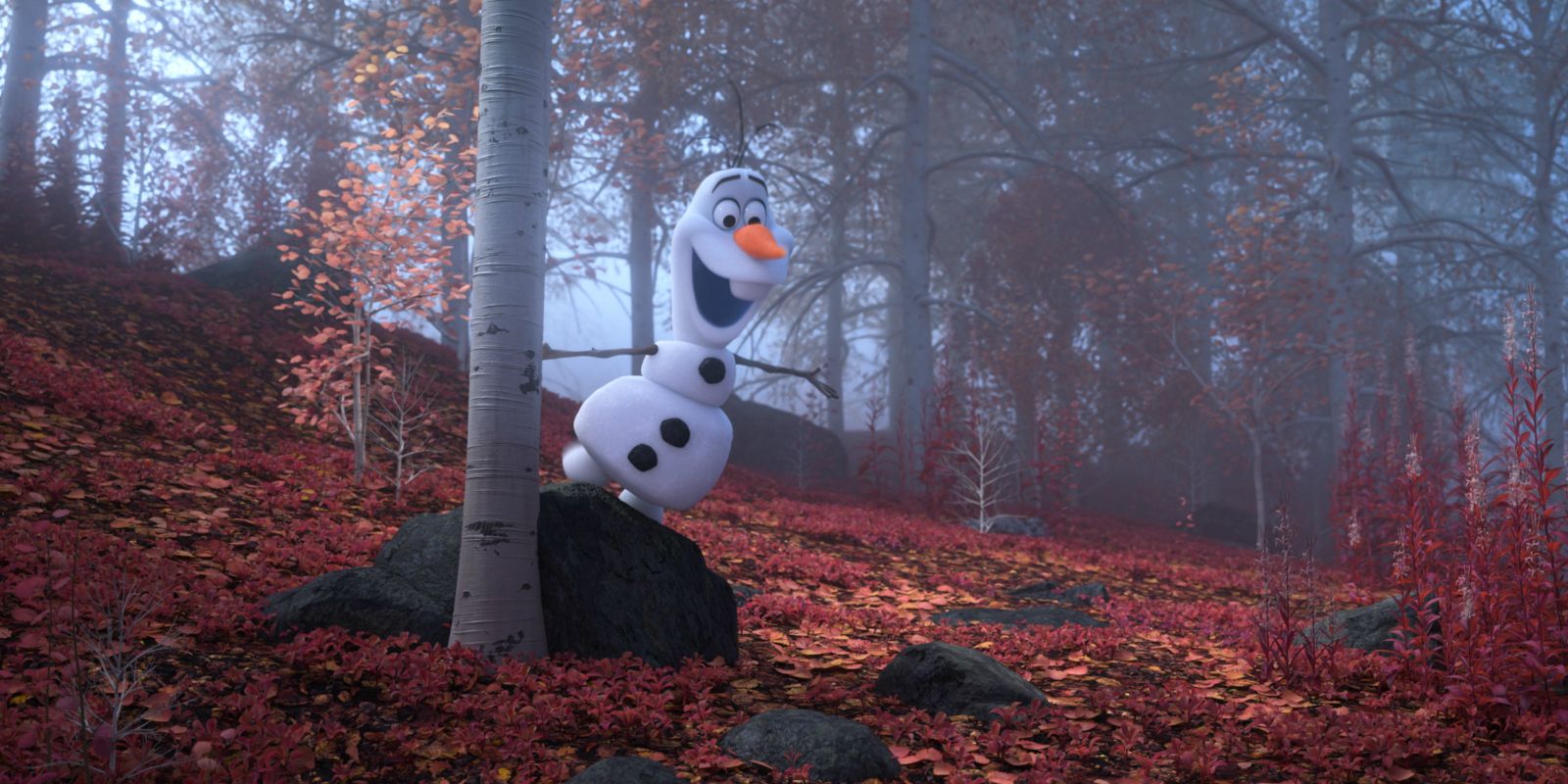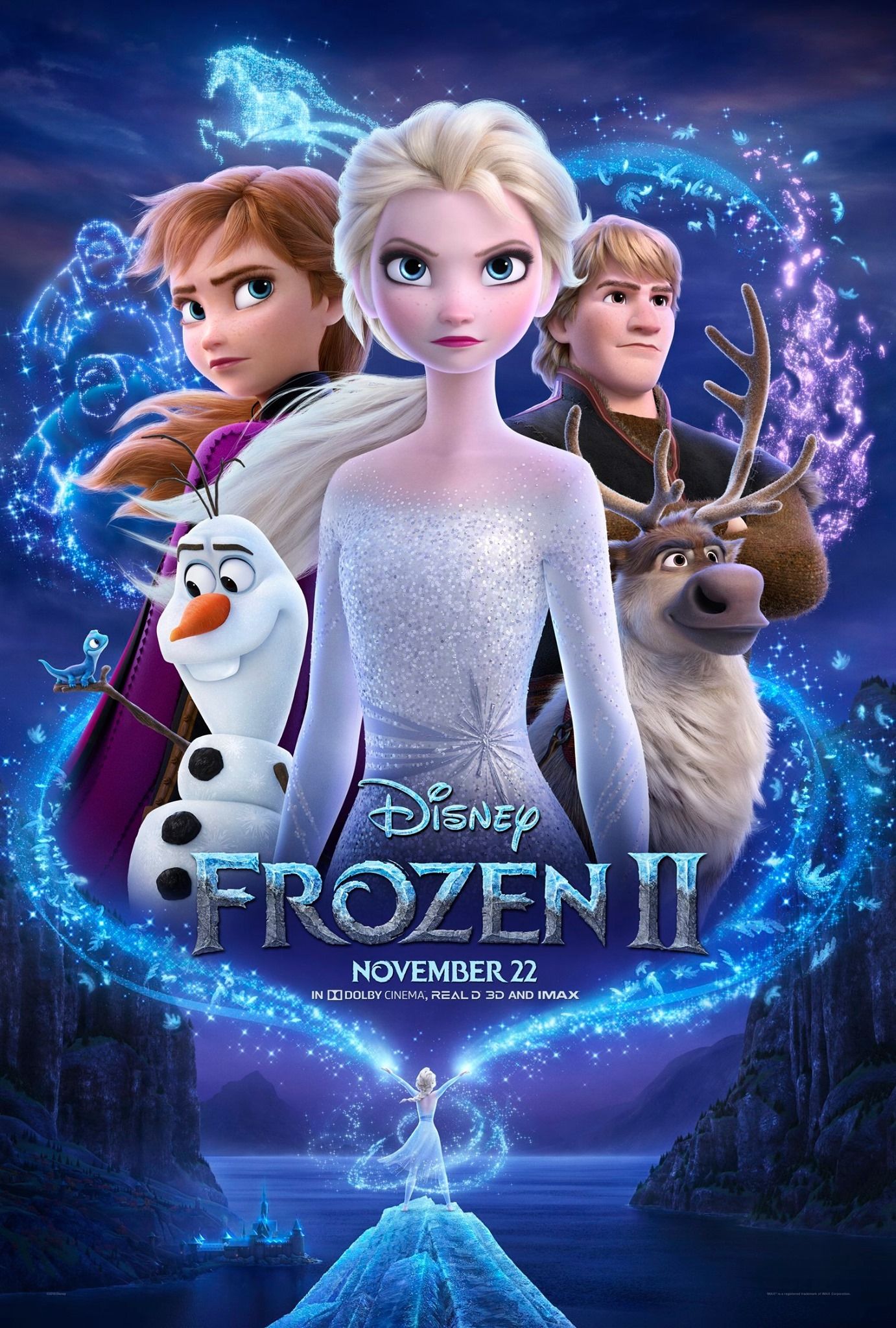Even though Frozen 2 continues the story from the first film, the world of the sequel is decidedly different in every way, shape, and form from Frozen - and Sean Jenkins (Head of Environments), David Womersley (Art Director of Environments), and Lisa Keene (Production Designer) were among the top people on the production who helped create the new version of Frozen's world.
Of course, the environment in the first Frozen was covered in snow thanks to Elsa's icy powers, but the sequel now takes place in the fall season, which means the snow is gone and there is a lot more verticality that audiences haven't seen before. Furthermore, since there are sequences that take place throughout Arendelle's village, the entire area needed to be redesigned.
In addition to doing all of that, creating the Enchanted Forest and everything that exists inside it - from the smallest leaves to the mist that encloses the magical land - took time and effort to get it right. After explaining their process and showcasing some examples, Jenkins, Womersley, and Keene answered a few questions from Screen Rant and other outlets in a Q&A session.
This seems like such a building out the village into such a dramatic full city planning, all of that. It’s amazing. But I was thinking about Frozen Fever, Olaf’s Frozen Adventure, the sort of things that came in between, which largely did take place maybe - I can’t recall where they sort of took place, but I imagine there were moments in villages and moments outside the castle and outside the forest. Did those inform? Are we going to pretend those don’t exist?
David Womersley: No, they did take place but in a similar way that the first one happened where it was more separate locations within that village. I think on Frozen 2 is the first time we actually really, really started to see the whole thing. We have movements over and we have movements through.
Did you have parts that you actually were able to bring over and reconstruct so they weren’t lost spaces? They were reabsorbed into a bigger plan?
David Womersley: Yeah, it wasn’t, it wasn’t changed so much as enhanced, I think. So things happened in the story all the time, you know, that you come in and say, well, I hope something happened, and then, oh, we have to do one of those, build something like that. So you’re building stuff at the time. You’re reacting to the story all the time.
Lisa Keene: And story changes almost until it comes out, so you’re constantly on your toes trying to keep up.
At the previous presentation they talked about the research trip to Iceland and Norway. Were you on that trip? And whether you were or you were not, you talk about what aspects of the research from that trip went into the forest or the addition of Arendelle?
Lisa Keene : Sure. We went on the first trip. So most of our research and reference and photography happened from the first Frozen. There was a lot that they saw in fall that we did not get to see, so we were like huddling on the photographs and research that they brought back and the descriptions of the environments. So, it was a little different for us this time around, but we had so much to start with that it was - this was just an addition not a complete re-envisionment.
Sean Jenkins : I mean a lot of the things that they would refer to was that fall color was down on the forest floor. The texture on how it was, it almost felt like sponge that you could bounce off of.
Lisa Keene: They would talk about the way it sounded when they walked on it and that kind of thing. And all that stuff means something visual to us as artists, so we can fold that kind of thing in and then do our own research and back that up.
So the fall forest is - the colors, they’re warm, and I think of them as sort of comforting and, and yet this is a stage for all kinds of challenges and scary, scary things. Was that a challenge to-
Lisa Keene: Well, we make it scary when we need to. And comforting when it’s not.
David Womersley: Lighting. Lighting helps a lot, yeah.
Lisa Keene: Yeah. We take that all through the gamut of emotions. And when you get a script and you’re reading that script and you sit down with the directors, you talk about every section of the film and how do they want to emotionally feel and make the audience feel through each step of it. And that’s one of the processes that we go through. So, we can pretty much take anything and turn that into any emotional state that we needed to, that’s all very articulated and worked out and choreographed as we move through the story. And that will change. As the story changes, we’ll back up and revamp and reconstruct and then add on. And we’re constantly moving things around in order to support the narrative.
David Womersley: And sometimes it’s good that you have something that’s nice and cozy, and then you have to change. You have something happen. So you go from that mood to something very quickly, something else very quickly.
And you talked about the mist and how useful that was for the integrity of that. Is that actually a natural element of the forest, or is that an invention that you brought to the design?
Lisa Keene: Well, certainly mist is a natural element in a forest, but in our movie it’s a conceit. It’s something that’s narratively very important. So, the Enchanted Forest is surrounded by this. So, it’s a story point and stuff that I can’t talk about becomes a thing.
Can you talk about the choice of color for the elemental fire, because it’s like this very magenta, which is obviously helps it stand out against all the warm colors of-
Lisa Keene: Right. So very early on Mike Giaimo had sort of sat down - and, of course, this is part of the story process that is evolutionary. Sometimes you don’t know you’re going to have these things to deal with. And as the movie began to mature, this became a huge character aspect. So Mike would sit down and try to figure out if we have these four elements, what are the best hues to describe those four elements. And then, of course, in his head he’s thinking about not just that, but how do these things and these characters have a life beyond just this concept, things that will inform clothing and costume and all sorts of other aspects that have a life beyond just that. So, his choreography is making all of those things work together. But certainly fire was a leading color, and then everything kind of supported off of that. Water and fire were the easiest two I think for him to choreograph, and then everything kind of sat in between in a very narrow palette range.




